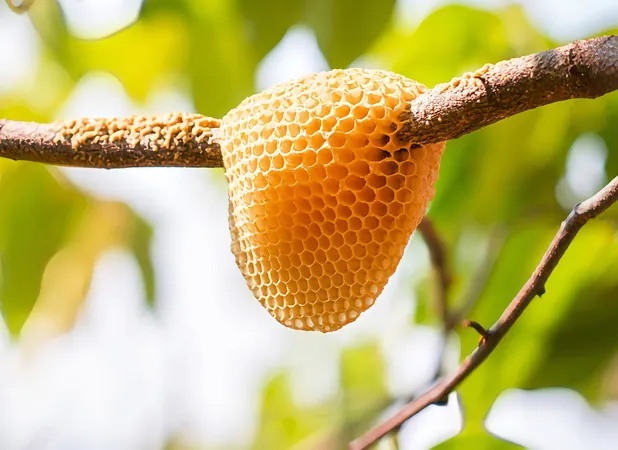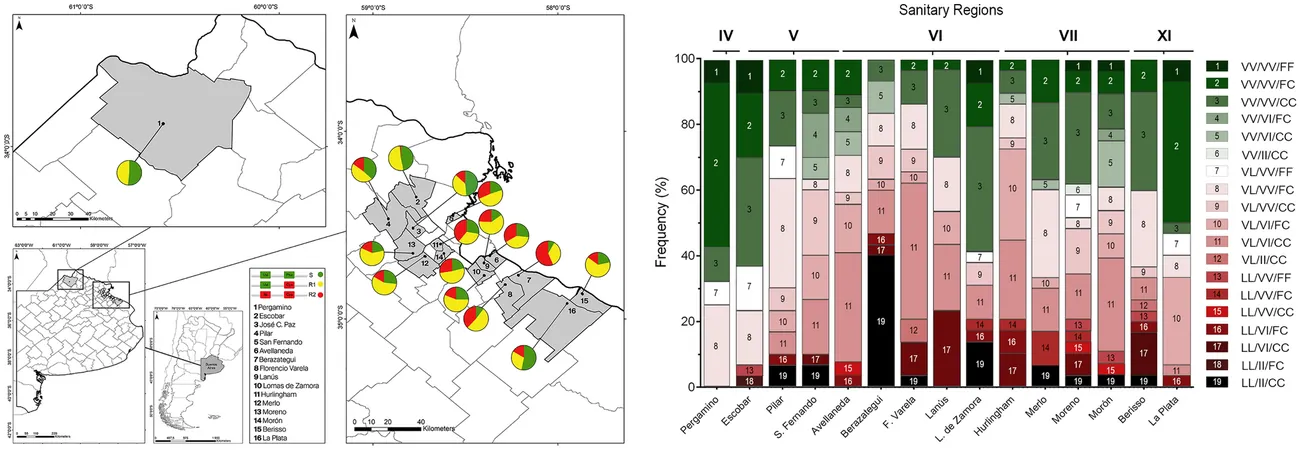
The Hidden Genius of Bees: Why Symmetrical Nests are More Than Just Eye Candy
2024-11-08
Author: Siti
Bees are sometimes seen as small, buzzing annoyances, yet these fascinating creatures have demonstrated incredible architectural skills that deserve our awe. Recent research funded by the U.S. National Science Foundation has revealed that bee colonies construct nests with remarkable symmetry, similar to the way we humans appreciate balance in our own homes.
The Beauty of Symmetry in Nature
At first glance, the symmetrical designs of bee nests may seem solely a matter of visual appeal. However, this impressive architecture plays a crucial role in the functionality and adaptability of the colony. These nests, built upon double-sided combs, not only look dynamic but also facilitate rapid growth and a well-regulated environment for the bees.
Function Over Form
As outlined by Michael L. Smith, an assistant professor at Auburn University, the symmetrical structure of a bee's nest allows it to thrive. “Just like plumbing in an apartment complex dictates the layout, heat sources play a pivotal role in how bees build their homes,” Smith explains. The thermal cues direct the queen on where to lay her eggs while ensuring symmetry throughout the nest, including the areas designated for pollen and honey storage.
Evolutionary Insights
Interestingly, this trait of architectural symmetry isn't isolated to just one species of bee; many honeybees from the genus Apis exhibit this fascinating behavior. This strategic shift towards double-sided comb construction likely occurred around 50 to 60 million years ago, representing an evolutionary adaptation that enhances their survival.
According to Colette St. Mary from the NSF, "Symmetry can be found throughout various levels of biological organization, but this marks the first study indicating architectural symmetry in superorganisms—like bee colonies." Such findings could reveal universal principles that govern life on Earth.
Conservation and Environmental Implications
The newly uncovered significance of symmetrical nests highlights its importance regarding bee conservation efforts. Understanding how the structural integrity and organization of nests contribute to a colony's resilience can inform effective conservation strategies.
Conservationists are encouraged to create habitats that uphold the natural building practices of bees. This can include preserving native vegetation and limiting disturbances in areas where bees thrive. By safeguarding these environments, we bolster the populations of these crucial pollinators, which are essential to our ecosystems and agriculture.
Beyond Bees: A Broader Perspective
The implications of this study extend past the world of bees and hint at broader ecological and evolutionary dynamics. By exploring symmetry across species, researchers may unravel deeper connections between form, function, and survival in our natural world. This not only informs us about the resilience of bees but also provides insights into the complexities of life itself.
In conclusion, the beauty of bee nests is more than skin deep. It underscores the intricate relationships in nature and serves as a reminder of the critical roles that all creatures, no matter how small, play in our ecosystem. As we continue to learn from these industrious insects, it's clear that there's so much more beneath the surface of their seemingly simple lives.
Stay informed and inspired! For more intriguing articles about our natural world, subscribe to our newsletter.


 Brasil (PT)
Brasil (PT)
 Canada (EN)
Canada (EN)
 Chile (ES)
Chile (ES)
 España (ES)
España (ES)
 France (FR)
France (FR)
 Hong Kong (EN)
Hong Kong (EN)
 Italia (IT)
Italia (IT)
 日本 (JA)
日本 (JA)
 Magyarország (HU)
Magyarország (HU)
 Norge (NO)
Norge (NO)
 Polska (PL)
Polska (PL)
 Schweiz (DE)
Schweiz (DE)
 Singapore (EN)
Singapore (EN)
 Sverige (SV)
Sverige (SV)
 Suomi (FI)
Suomi (FI)
 Türkiye (TR)
Türkiye (TR)